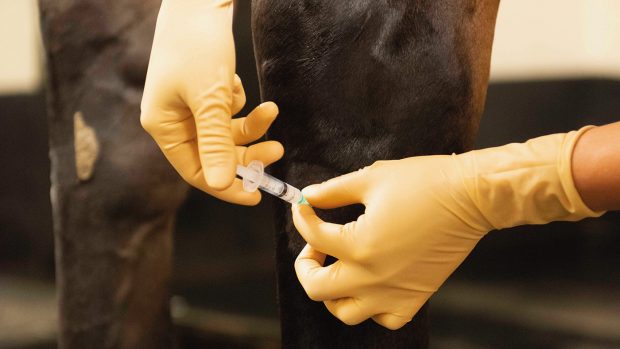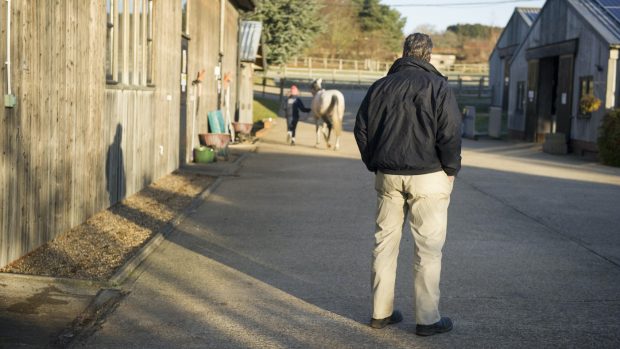Q: My daughter’s six-year-old New Forest pony has developed a shortness of stride in his left hind, which the vet presumes was due to an injury in the field.
The cause was first diagnosed as a muscle strain and he was turned out and rested for four weeks.
At the end of this period he showed lameness in the left hind and was diagnosed with a sprained fetlock joint but X-rays showed no joint injury.
After a few months of rest and controlled exercise, he showed some improvement but the shortness in his stride still remained.
My concern is that our pony has not responded to the treatment of rest and controlled exercise, which has been going on for six months, and my vet cannot diagnose the cause of the lameness, although he suspects it might be a problem in the stifle or hock.
My vet has now recommended that the pony is referred to a specialist. He’s not insured and mounting vet bills are a worry. Can you advise me?
Jo Holmes replies: It is difficult for me to add to the conclusions already reached by your own vet but I will explain the reasoning behind their actions.
In the first instance, if non-specific lameness was seen in your pony’s left hind leg, box or grass rest might have been the easiest and most cost-effective treatment to prescribe.
Since rest was not successful, I presume the pony responded positively to a subsequent fetlock flexion test, indicating that joint as the problem area.
Even if radiographs of a joint are clear, showing an absence of bony abnormalities , there can still be injury to ligaments around the joint.
Such “soft tissue” injury can be difficult to pinpoint: diagnostic ultrasound can locate tears in several of the ligaments around the fetlock joint but not every veterinary practice has access to the type of sophisticated machine required for this.
Acute joint sprains need at least six weeks of box rest to eradicate inflammation and allow ligaments to heal. The healing process can take several months to complete, during which controlled exercise at all times, as you have described, is essential.
I too would recommend referral for a series of diagnostic nerve blocks. Here, local anaesthetic would be injected at various sites up the leg, sequentially numbing regions of the limb that may be painful. In this way, specific joints or soft tissue structures, such as tendons and ligaments, can be isolated at the source of pain .
This techniquehas less effect above the stifle since nerves become inaccessible as they retreat into the spinal cord. However, within the stifle and below, the source of pain can usually be localised reasonably accurately .
Unfortunately, many smaller veterinary practices don’t have the facilities to offer a detailed lameness work-up. Even if they can identify the problem, they may recommend referral if surgery is indicated as the best course of treatment, as expertise tends to be found at specialist centres.
I believe that your vet has tried to keep the investigative costs low until now and there is still a good chance that your pony can be completely cured .
However, to fully diagnose your pony’s problem, referral is necessary and will not be cheap.
Insurance is vital and is something every owner should have – even vets insure their own animals. If you explain your financial predicament to the referral centre, they should keep you updated on their findings, so that you can call a halt to proceedings if the investigation stops being economically viable .
The cost of emotional attachment can be dear if a first pony is involved. It does sound to me like your pony has a more serious problem than was first thought, since it appears he has improved so little despite having so much rest.
Active investigation is the only way forward to solve your dilemma – in my opinion more rest is unlikely to achieve much.




